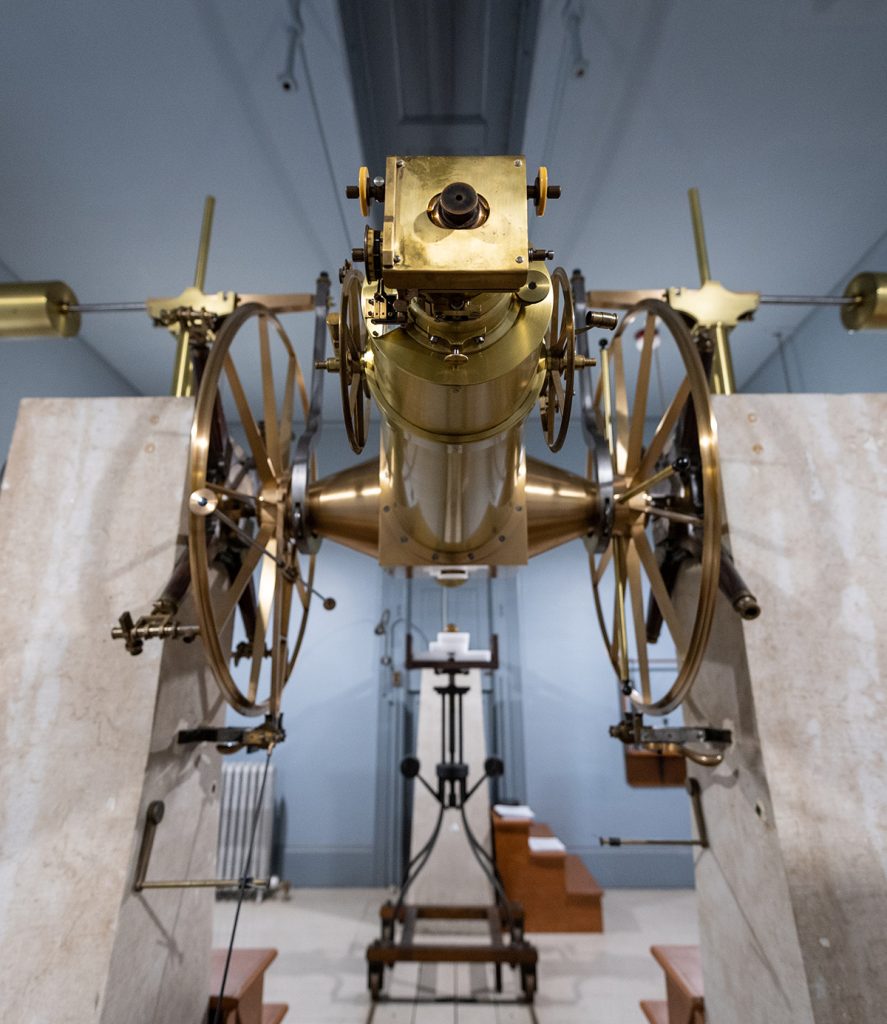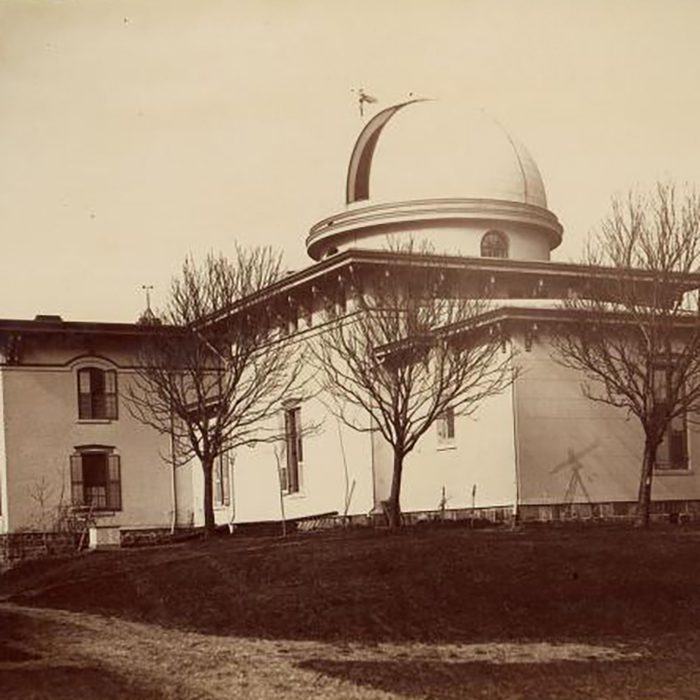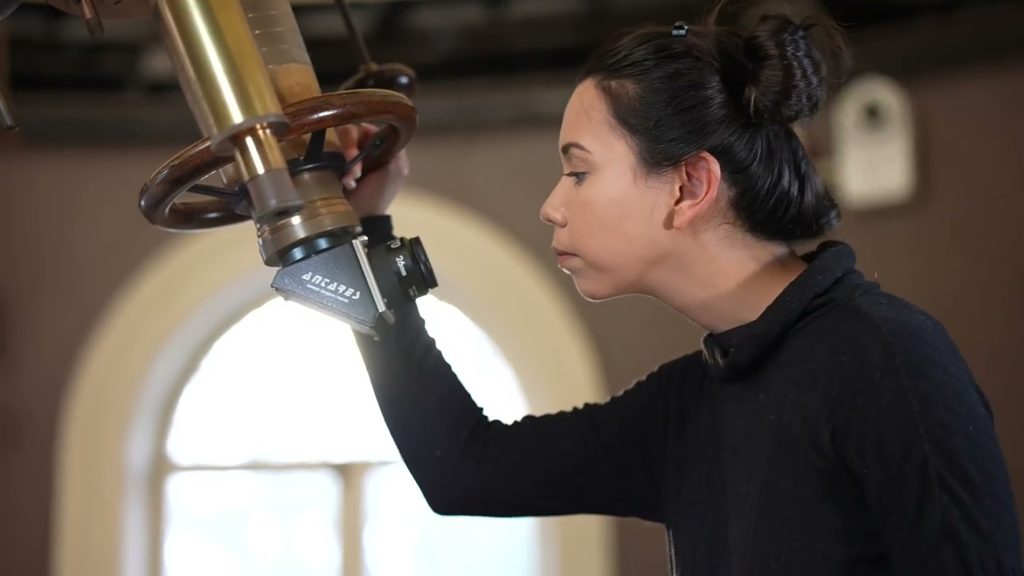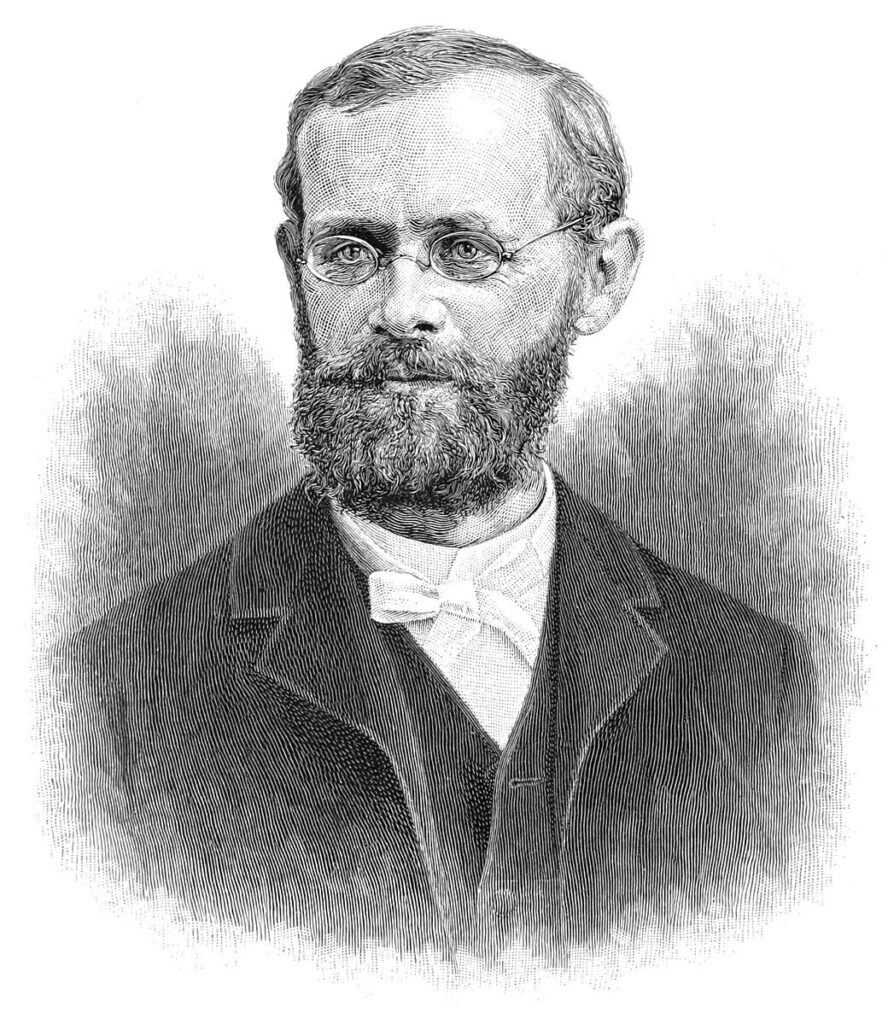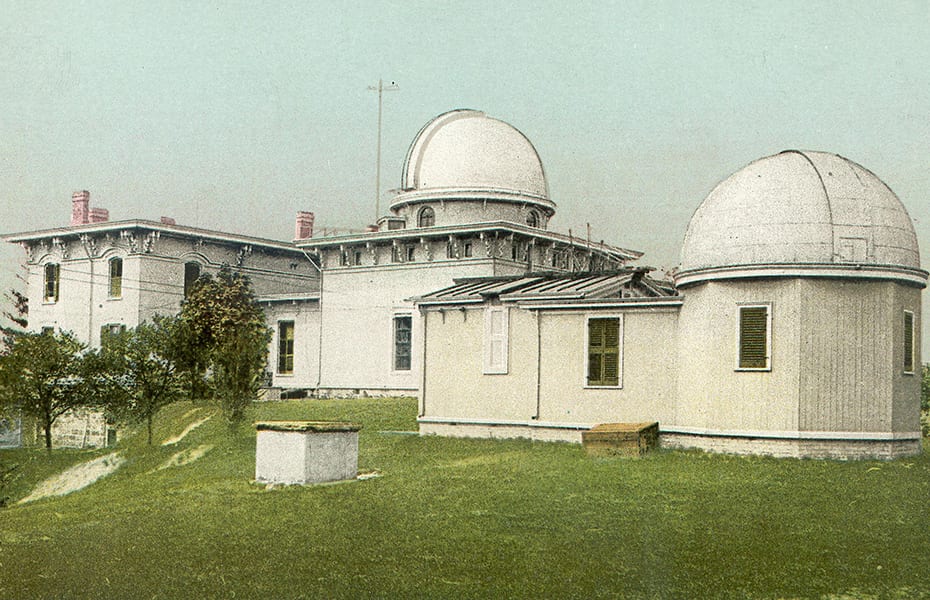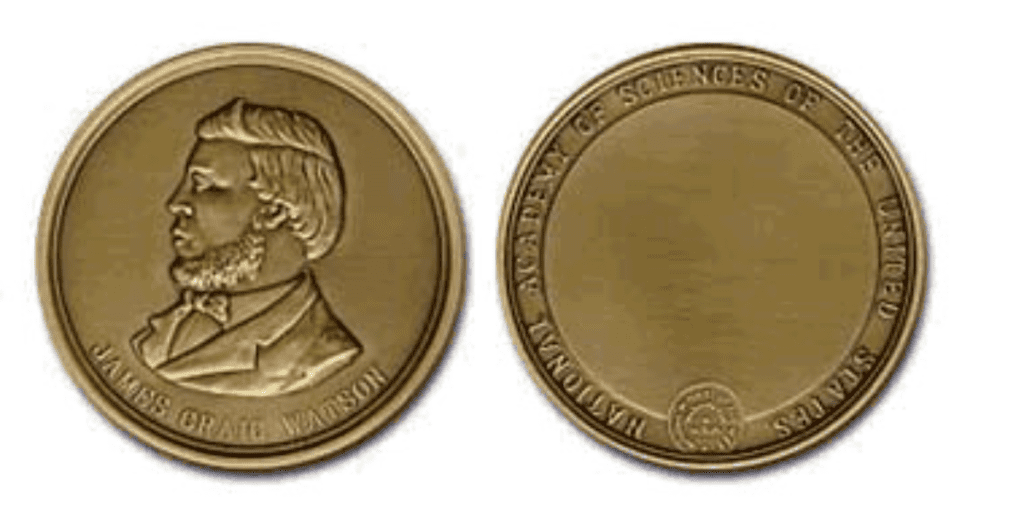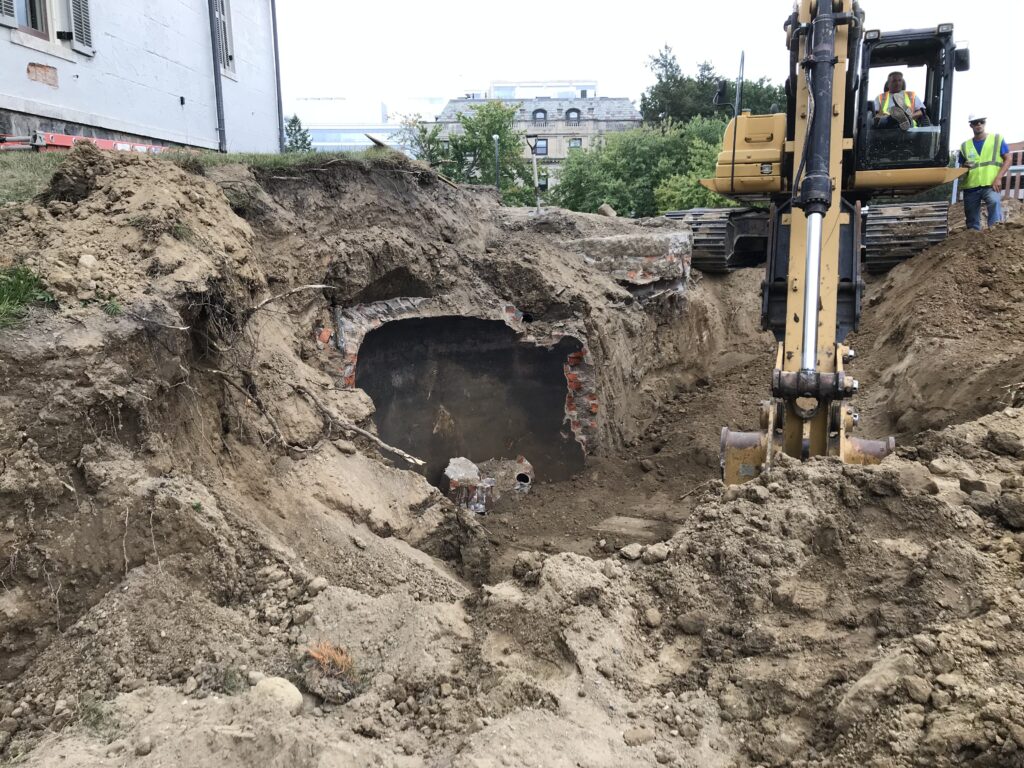Are You Interested in Helping Detroit Observatory Visitors Explore the Sky and Discover the Past?
Would you like to give history tours of the Detroit Observatory or of the University of Michigan campus? Help educate visitors using Observatory exhibits and facilities? Develop and mount exhibits on astronomy, other sciences, the history of U-M, and more?
A docent is a person who acts as an educator and guide at a museum or, in this case, an historic observatory. Their job is to help visitors have the best experience they can.
There are two kinds of docents at the Detroit Observatory: Astronomy Docents, who help with telescope operation and astronomy presentations, and U-M History docents, who help with history tours, presentations, and exhibits. Our docents will receive extensive training relevant to their responsibilities., Prior experience in operating telescopes, giving tours, or understanding U-M history is not necessary.
We do not have docent positions open at this time, but please check back because we expect to do more hiring in the future.
